
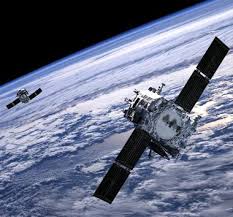
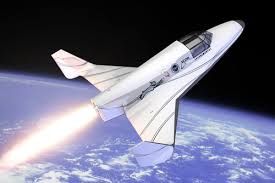
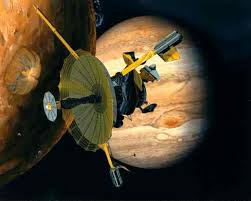
- Home1
- Solar System
- Universe
- Mercury
- Earth
- Mars
- Jupiter
- Saturn
- Uranus
- Neptune
- Venus
- Pluto
- Gravity
- Force
- Acceleration
- Radiation
- Dark Energy & Dark Matters
- Laws of Universe
- Black Hole
- Intern Article / Paper Publication
- Galaxy
- guestbook
- chatroom
- Blogger
- Membership

SPACE HERO'S
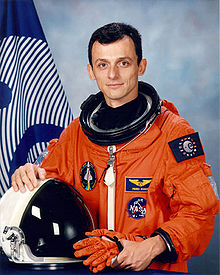
Pedro Duque Duque
First Spanish in space .
( Born 14 March 1963) is a Spanish astronaut and a veteran of two space missions.Duque earned a degree in Aeronautical Engineering from the Universidad Politécnica de Madrid (UPM) in 1986. He worked for GMV and for the European Space Agency (ESA) for six years before being selected as an astronaut candidate in 1992. Duque underwent training in both Russia and the United States. His first spaceflight was as a mission specialist aboard space shuttle mission STS-95, during which Duque supervised ESA experimental modules. In October 2003, Duque visited the International Space Station for several days during a crew changeover. The scientific program of this visit was called by ESA/Spain Misión Cervantes.
He worked at the UPM, in the Escuela Técnica Superior de Ingenieros Aeronáuticos,[1] he used to work at Deimos Imaging. Currently he is back as an astronaut of ESA, and leads the Flight Operations Office near Munich.
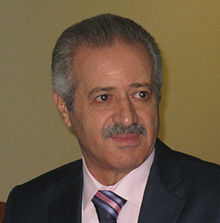
Muhammed
Ahmed Faris
First Syrian and secound Arabic in space
.
(Arabic: محمد أحمد فارس; born 26 May 1951) is a Syrian military aviator. He was the first Syrian and the second Arab in space.
Born in Aleppo, Syria, he was a pilot in the Syrian Air Force with the rank of a colonel. He specialized in navigation when he was selected to participate in the Intercosmos spaceflight program on 30 September 1985.
He flew as Research Cosmonaut in the Interkosmos program on Soyuz TM-3 to the Mir space station in July 1987, spending 7 days 23 hours and 5 minutes in space. He returned to Earth aboard Soyuz TM-2.
Muhammed Faris was awarded the title Hero of the Soviet Union on 30 July 1987. He was also awarded the Order of Lenin.[2]
After his spaceflight, he returned to the Syrian Air Force and lived in Aleppo. He is married and has three children.
On 4 August 2012, during the Syrian civil war, he defected from Assad's government and joined the armed opposition.[3][4]
On 13 September 2012, made an exclusive interview with Al Aan TV and covered many topics regarding the Syrian civil war

Bertalan Farkas
First Hungarian and first sperantist in space .(Born August 2, 1949) . He is currently the president of Airlines Service and Trade. With Charles Simonyi's travel, Farkas is no longer the only Hungarian who has been to space (he is still the only astronaut, as Simonyi flew as a space tourist
Born in Gyulaháza, he graduated from the George Kilián Aeronautical College in Szolnok in 1969. He then attended the Krasnodar Military Aviation Institute in the Soviet Union, from where he graduated in 1972.
After earning his qualifications at University, Farkas joined the Hungarian Air Force and rose to the rank of Brigadier General.
n 1978 he volunteered to become a cosmonaut and was selected as part of the fifth international programme for Intercosmos. His backup cosmonaut was Béla Magyari.Farkas, along with Soviet cosmonaut Valeri Kubasov, was launched into space on Soyuz 36 from Baikonur Cosmodrome on May 26, 1980, at 18:20 (GMT).While in orbit, Farkas conducted experiments in material science. After 7 days, 20 hours and 45 minutes, and having completed 124 orbits, Farkas and Kubasov returned to Earth, landing 140 km southeast of Jezkazgan. Bertalan Farkas was awarded the title Hero of the Soviet Union on June 30,
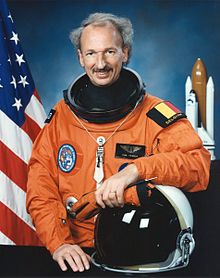
Dirk Dries David Damiaan,
Viscount Frimout
First Belgian in space .
(Born 21 March 1941 in Poperinge, Belgium) is an astrophysicist for the European Space Agency. He flew aboard NASA Space Shuttle mision STS-45 as a payload specialist, making him the first Belgian in space.
Elementary School at Poperinge. Secondary School at Atheneum at Ghent, Belgium. Received an Engineer's degree in electrical engineering at University of Ghent in 1963; a PhD in applied physics from University of Ghent in 1970; post-doctorate at University of Colorado, Laboratory for Atmospheric and Space Physics (ESRO fellJH
Frimout flew as a payload specialist on STS-45 Atlantis (24 March to 2 April 1992). STS-45 was launched from and returned to land at the Kennedy Space Center, Florida. It was the first Spacelab mission dedicated to NASA's Mission to Planet Earth. During the nine-day flight, the crew aboard Atlantis operated the twelve experiments that constituted the ATLAS-1 and Science) cargo. . At mission conclusion, Frimout had traveled 3.2 million miles in 143 Earth orbits and logged over 214 hours in space.

NEPTUNE
Neptune is the eighth and farthest planet from the Sun in the Solar
System. It is the fourth-largest planet by diameter and the
third-largest by mass. Among the gaseous planets in the solar
system, Neptune is the most dense.
Radius: 24,622 km
Mass:
102.4E24 kg (17.15 Earth mass)
Surface
area: 7,618,272,763 km²
Surface
Temp : (- 200 ) degrees Celsius
Mass
: 102,440,000,000,000,000,000,000,000 kg (Earth:
5,973,700,000,000,000,000,000,000 kg )
Time to spin on Axis 16 hours, 6.5 minutes (Earth: 23 hours, 56 minutes )
Time
to orbit the Sun : 164.79 Earth years or 60,190 days
( Earth: 365 days, 6 hours )
Diameter
across equator : 49,528 km / 30,776 miles (Earth: 12,756 km /
7,926 miles )
Gravity
(Earth = 1) : 1.1
Escape
Velocity : 85,356 km/h / 53,038 mph (h Earth: 40,248 km/h /
25,009 mph )
Temperature
at Cloud Tops : -216 °c / -357 °F / 57 K ( Earth's
average temp: 15 °c / 59 °F / 288 K )
Contents of Atmosphere : Hydrogen, Helium, Methane
Discovered:
September 23, 1846
Moons:
Triton, Nereid, Proteus, Larissa, Thalassa, Despina, Sao, Neso,
Naiad, Galatea, Psamathe, Laomedeia, Halimede
Discoverers: Johann Gottfried Galle, Heinrich Louis d'Arrest,
Urbain Le Verrier, John Couch Adams.
Neptune is about 4,500 million miles from the Sun and its orbit
takes 165 Earth years.


